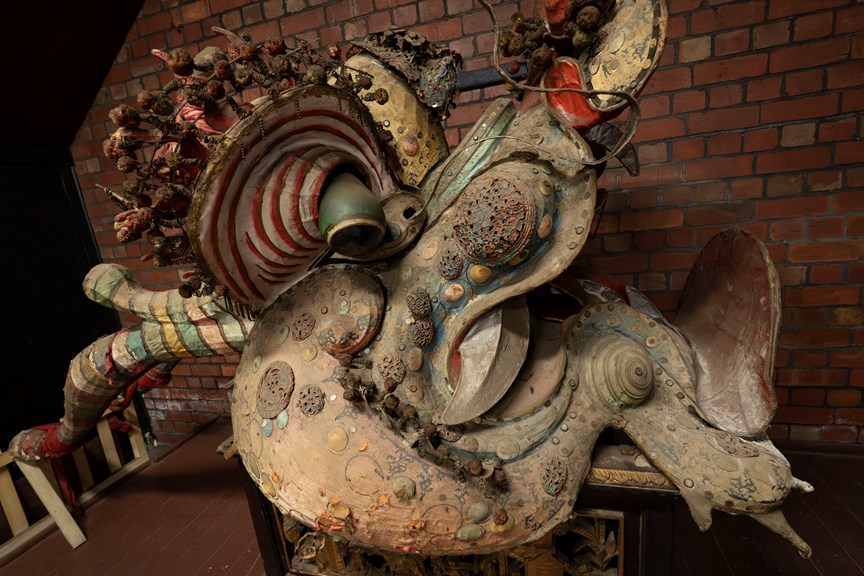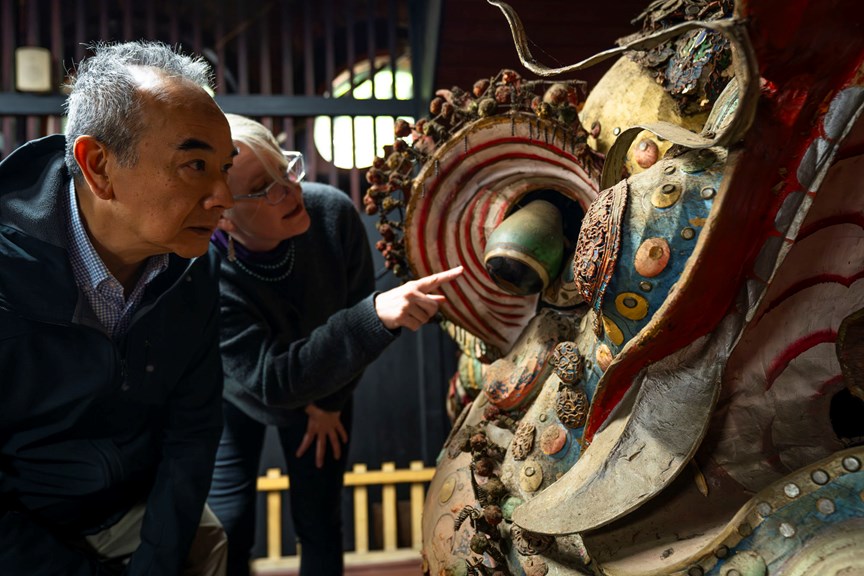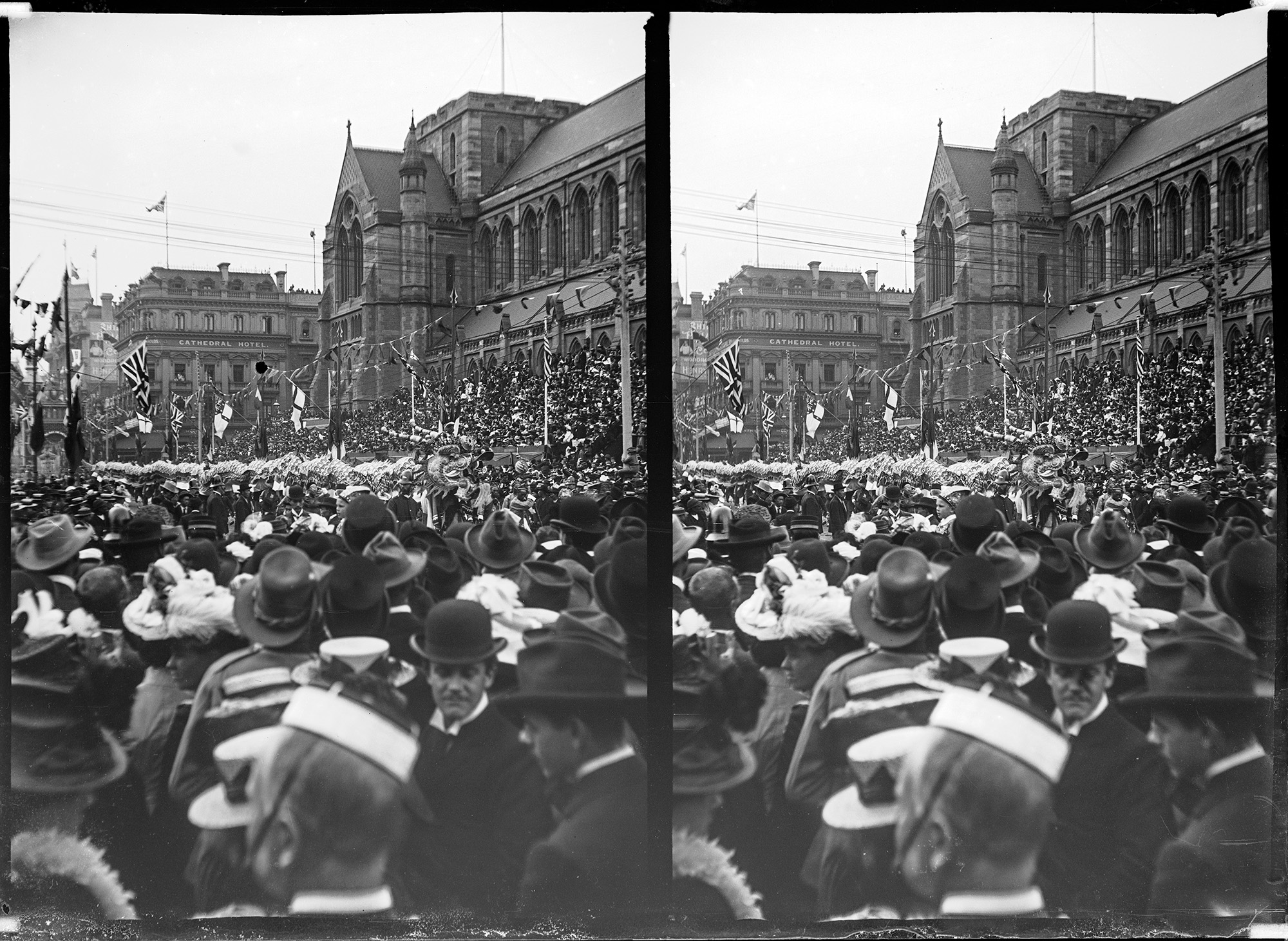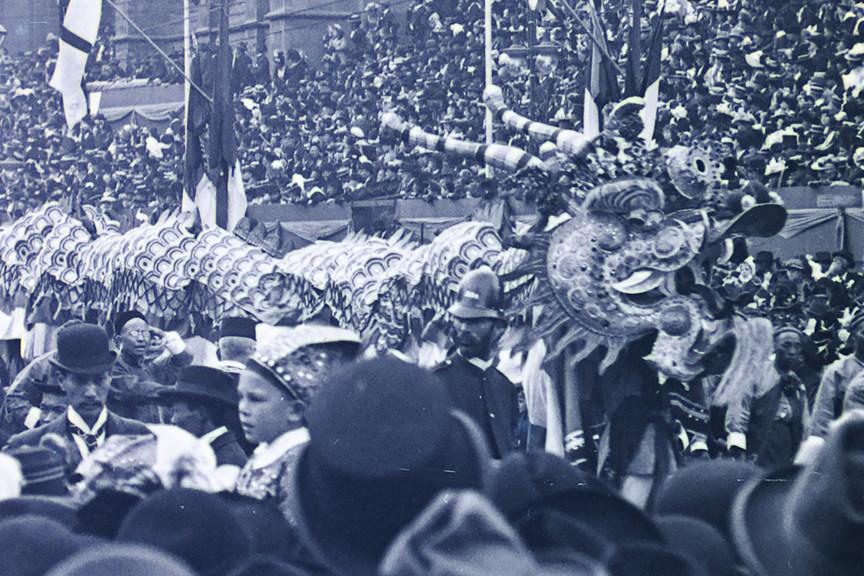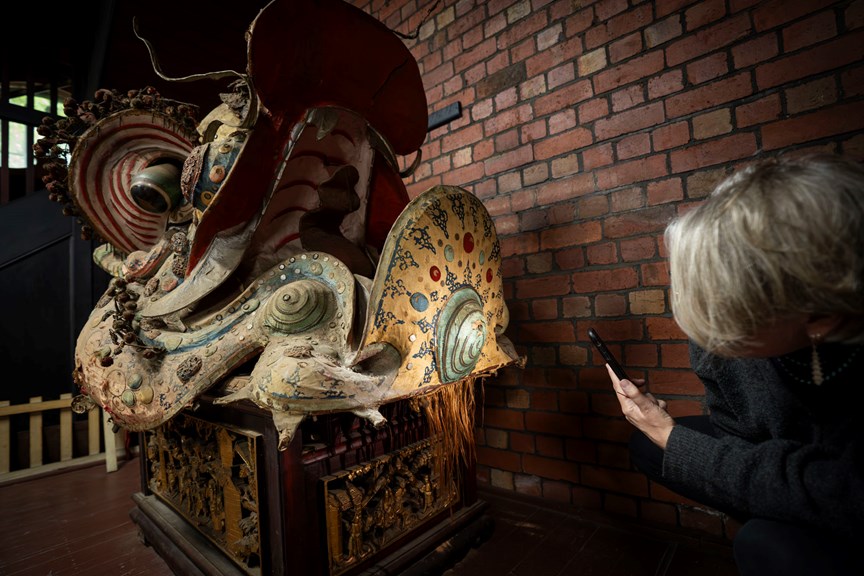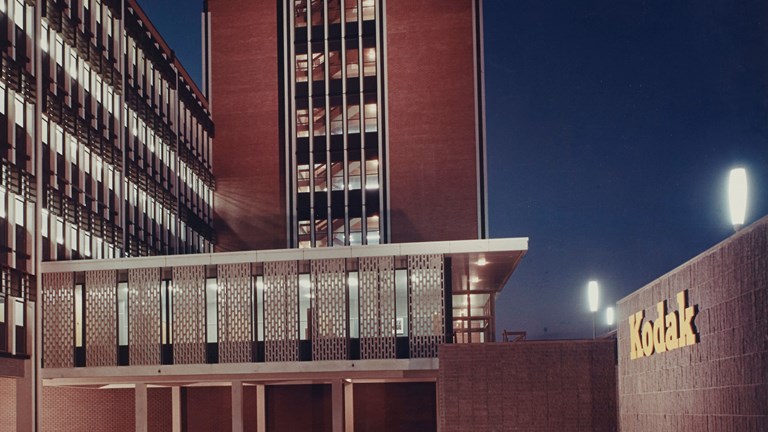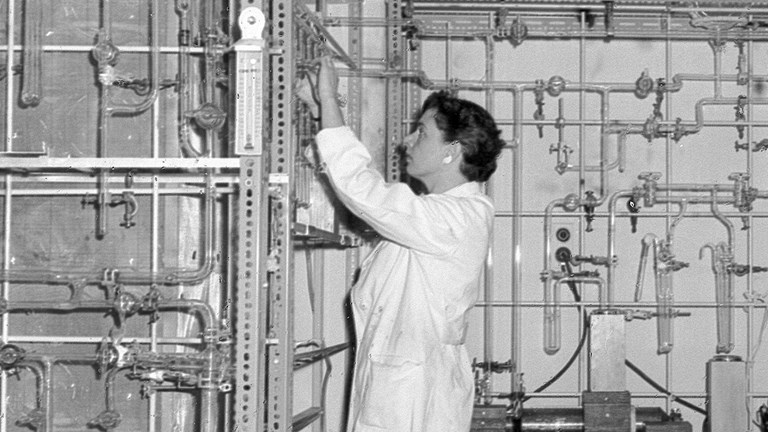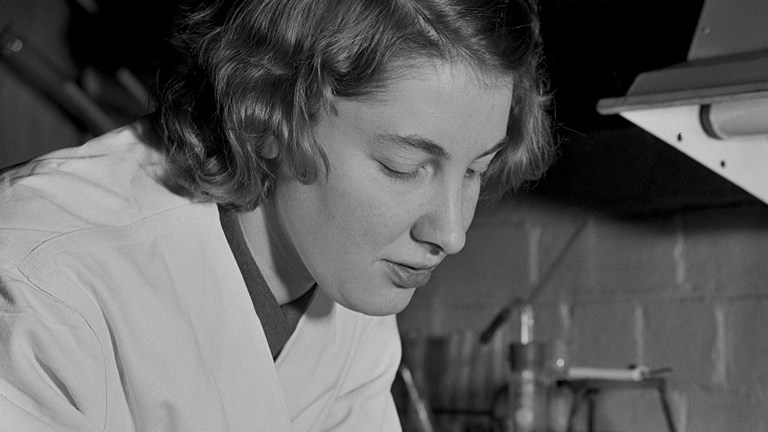Unravelling the tale of Melbourne's mystery Chinese dragon
Solving the mystery of Melbourne's forgotten Chinese dragon with a dusty 120-year-old head, a rare photograph, and a determined historian.
In a Chinese temple, in South Melbourne, lies a dusty dragon’s head.
For decades this faded dragon has been smothered in incense that regularly fills the See Yup Temple’s halls, especially during Lunar New Year celebrations.
But no one is entirely sure where this dragon came from.
‘I grew up in South Melbourne, so I’ve always known about the temple,’ says Dr Sophie Couchman, historian and honorary research associate at Museums Victoria.
‘I’ve been researching Chinese-Australian history for 20-odd years now.
‘I don’t even know when I first met the dragon, but I’ve always wondered about his history.’
Within the temple society there are two main theories about its origin.
One story is that it came to Australia in the 1950s.
More tantalisingly, the second is that it paraded in Melbourne during the celebrations of Australia’s Federation in 1901.
‘Unfortunately, there’s not a lot of written history about it, it’s only word of mouth that has been passed down,’ says Michael Lam, a member of the See Yup Society committee.
So where do we begin to unravel this dragon’s tale?
Forgotten Federation history
The celebrations of Australia’s Federation in 1901 were a big deal, especially in Melbourne where the first parliament opened at the Royal Exhibition Building.
So, there are plenty of written accounts in newspapers of the time but these accounts can be unreliable for anyone trying to track down a dragon.
Despite some inconsistencies, Sophie says the consensus of these reports is that there were two dragons at Federation—a larger one and a smaller one.
‘There are two New South Wales newspapers that reported that the dragon at the Federation parade were a Bendigo dragon and a Ballarat dragon,’ says Sophie.
But it is not that simple.
‘With the assistance of Leigh McKinnon, from the Golden Dragon Museum who shared some images of the Ballarat dragons in Ballarat at Federation, I’ve decided that they’re not reliable as sources,’ says Sophie.
‘It really comes down to looking at photographs to identify what’s going on because the newspaper accounts are not detailed enough.’
One photo from the time clearly identifies Bendigo’s famous dragon, Loong, as being there.
‘Loong was absolutely in Federation, and what I’ve come to believe is that Loong is what’s referred to as the big dragon in the parade,’ says Sophie.
But the smaller dragon is harder to come across.
‘It wasn’t photographed very often,’ says Sophie.
In fact in her years of searching, she has only been able to find two photos that show this second dragon.
One, in the Public Records Office, shows the dragon from the front—its mouth open towards the camera, making it hard to identify.
But another, from the Museums Victoria Collection, shows the dragon from the side.
Glass from the past
On 7 May 1901, an electrician and amateur photographer named Godfrey Henry Myers was watching on the Federation parade with his stereograph camera.
Among the dozens of photos he took of these celebrations of a new nation, Godfrey snapped just one of a Chinese dragon parading—a photo that is still preserved on a glass negative in the museum’s collection.
‘The magic of a glass negative over a newspaper image or even a print is that you can get this extraordinary detail and you can really zoom in,’ says Sophie.
The photo revealed intricate details of this forgotten dragon, including prominent striped horns.
‘The striped horns are the feature that now identifies this dragon,’ says Sophie.
And these horns match those found on the See Yup Temple’s dragon.
But some details were missing.
‘The circular roundels that decorate the cheeks have come off in the surviving dragon so it’s difficult to match them up to the photo—they don’t necessarily match,’ says Sophie.
Decoration on top of the head has also collapsed; his neck frill missing and his beard now nearly gone and in a different place to the photo.
‘All of those things make it difficult to, 100 per cent, match the two,’ says Sophie.
The breakthrough Sophie sought came from another source altogether.
‘I’m part of a Chinese-Australian family history group and one of our members, Ian Young, has been researching his ancestor who was a Chinese community leader of sorts in Geelong,’ says Sophie.
‘He’s been meticulously going through Geelong newspapers.’
While digitised, and searchable, historical newspapers have aided researchers in finding scraps of information from days gone by, Ian found a report in a physical paper from 1903.
‘What he found was that the Geelong community in 1903 approached both the See Yup Society and a group called the Bo Leong…to loan a dragon for a gala to raise funds for an unemployment scheme,’ says Sophie.
‘Costumes came from See Yup; Bo Leong had the dragon.
‘It talked about how the dragon has cost £250 to purchase…and that he had been bought specially for Federation.
‘And so, all of a sudden in the newspaper, there it is.
‘That was a solid, “Aha” moment for me.’
The See Yup Society dragon
The See Yup Society was formed in 1854 to support migrants from four specific districts of Southern China.
The Bo Leong organisation was set up in the 1890s to support Chinese people in the community in need of financial support but ceased in 1912.
Sophie has also since uncovered other Bo Leong artefacts in the See Yup Temple, adding weight to the theory that the temple took in the dragon after its former owners disbanded.
‘To me it explains how he’s gotten a little bit forgotten because he was owned technically by a separate organisation—an allied organisation to the See Yup,’ she says.
‘Everything is coming together to suggest that this dragon was purchased for Federation and paraded as the smaller dragon.’
So, how much does that mean for the See Yup society?
‘This temple was built in 1856, and it’s one of the oldest temples in Australia, so it’s very significant to verify this dragon,’ says Michael.
‘It’s important to know that this was part of Australian history.
‘The dragon has always been a symbol for Chinese people and having such an important dragon, that was part of Federation, in this temple is very significant.
‘Sophie has been a great help and providing a lot of advice on how we can move forward.
‘I would love to be able to restore this dragon to his former glory,’ says Michael.
But how damaged is the dragon, really?
‘He has a special place in the temple,’ says Sophie.
‘He guards over the ancestral tablets, so he has acquired a special spiritual connection in this place.
‘But it does mean that he is covered in a lot of incense.’
Which may not be as bad as it sounds.
‘We have had a conservator come and have a look at him,’ says Sophie.
‘She’s advised that in fact the incense has helped to protect him…from light damage and insect damage.
‘So underneath the dust he’s in quite good condition.’
And with plans to expand on the display at the See Yup Temple, including the history Sophie has uncovered, this Federation dragon will not be forgotten again.

